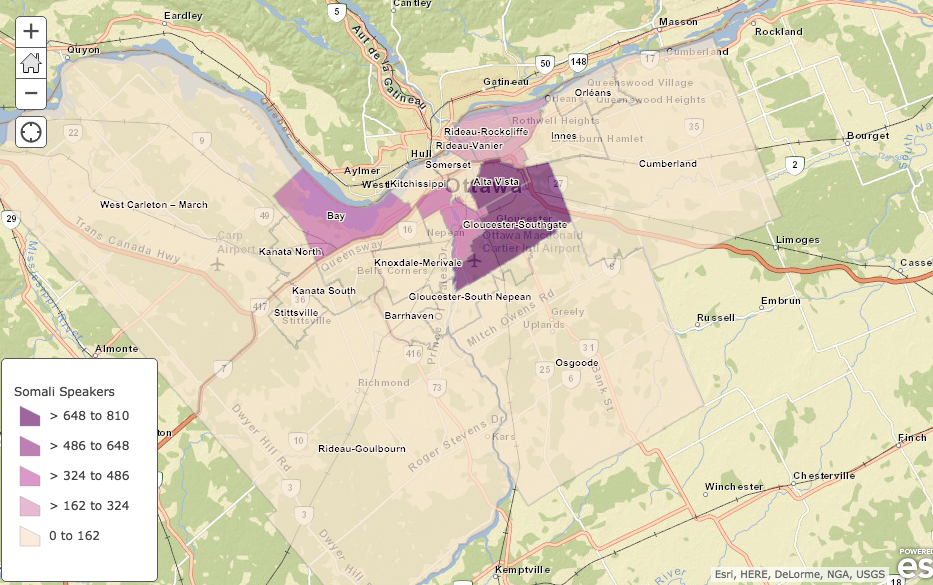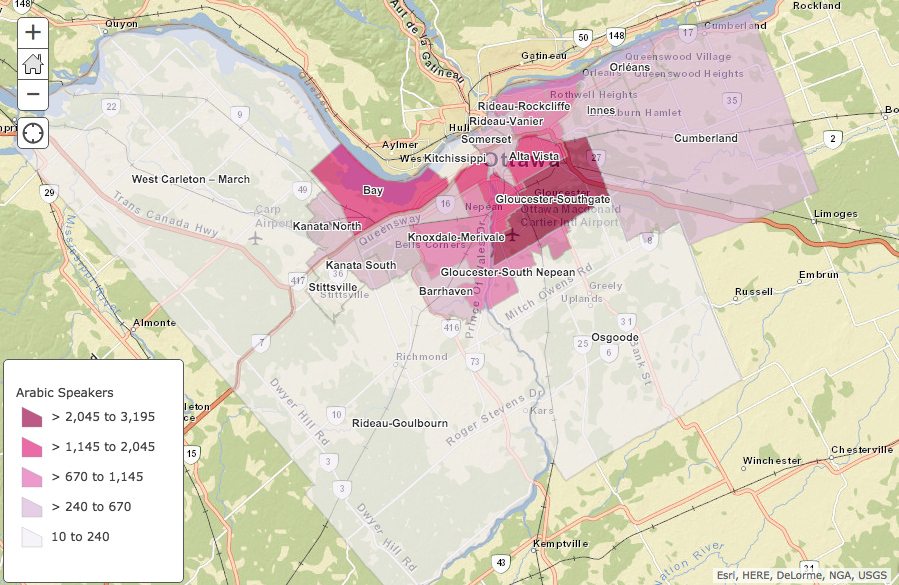By Priscilla Hwang
Almost twenty-five years ago, the first Somali refugees fleeing the Somali civil war began trickling into Canada.
“When the war broke out, people fled in whichever direction they could go,” said Rukia Warsame, a former refugee who fled to Canada at that time.
Today, 25,000 Syrian refugees are expected to come by February 2016. This is a realistic and even a minuscule number, according to Professor Kamal Dib who specializes in the Middle East and Canadian social policy at the University of Ottawa.
“Twenty-five thousand is a drop in the bucket,” said Dib.
Ottawa could welcome as many as 2,000 Syrian refugees by February, said Mayor Jim Watson last month. This may be just the beginning of perhaps a larger resettlement of Syrians in Ottawa in the coming years.
The short-term questions are where to settle them but the larger issue is the resettlement process and integration of the refugees into the society, according to Habiba Ali, a Somali playwright of three plays addressing the plight of the Somali immigrant population.
The largest Somali population lives in Ottawa’s Southeast end, according to analysis of the 2011 national household census data. This area encompasses the Alta Vista ward with areas from Elmvale to Cedarwood and the Gloucester-Southgate ward with areas east of the Rideau River to parts of Heron Gate.

Eleven per cent or over a tenth of the population in the Alta Vista ward identified to speak Somali most often at home. Just under a tenth or 8.5 per cent of the population in Gloucester-Southgate identified themselves as Somali speakers at home.
The large availability social housing in this area is a factor for this concentration of Somalis, according to Warsame, a settlement counsellor at the Somali Center for Family Services.
Congregating in an area close to others with the same ethnic background and language is a norm, she said.
Ottawa’s southeast end, however, is known for its criminal activity and run-down neighbourhoods. And one major challenge faced by the Ottawa Somali community is youth criminalization, said Ali who is also a youth social worker.
According to Ottawa Police 2016 draft budget documents released last week, the OPP is designating the largest amount of money to the police centre located in the Heron Gate region in Ottawa’s south end.
The resources for policing operations are doubled for this location compared to rest of Ottawa’s police centres.
There were four incidents of swarming and robbing lone victims in the Cedarwood area between Nov. 27 and 30, according to an Ottawa Police release last week. Hakim Abdu Ker, 19, and a male youth, 15, were charged.
Two men have also been charged for stabbings on Cedarwood drive on Oct. 21. Mohamud Hussein, 25, and Mohamed Ismail, 20, are facing charges.
The Ottawa police did not confirm the ethnicity of the men’s backgrounds.
“Their names are of a Somali descent, but I can’t specify that’s where they’re from” said Constable Chuck Benoit, media relations officer for Ottawa Police. “All incidences are investigated separately unless they’re joined with certain bodies or people, gang related or drug trade.”
But Somali gangs have been an issue in this region for several years.
“A lot of Somali boys are going into gangs,” said Isra Ahmed, a Somali student from Carleton University. “I have friends who have brothers affiliated with gangs. They’ve been in prison. It’s quite sad to see them go through things like that.”
Other challenges for immigrants and refugees include intergenerational gaps, mental health issues, as well as discrimination.
Ali, who has lived in Canada since she was four years old, still receives discrimination here in Ottawa.
“I’m told by ignorant people to go back home,” said Ali. “This is home for me. This is all I know.”
After twenty-five years, the Somali population have integrated into Ottawa’s society.
“Successful integration isn’t really shared as much as unsuccessful integration,” said Ali. This year Canada elected its first Somali MP Ahmed Hussen who was a Somali refugee.
Currently, the Syrian refugees can bypass the challenges of documentation because of the security checks they receive overseas “It was not done before to this speed that it’s being done now. Before it would take years,” said Warsame.
But the greater challenge will be awaiting them in Canada.
“There’s a lack of support,” said Ali. “Coming from a completely supportive environment where there’s lots of neighbours and family members around to an individualistic, isolated place like Canada where everyone is to each their own.”
The largest Arabic speaking population also lives in the southeast end of Ottawa.

This may suggest that in the longer term, the Syrian population may find themselves integrating in to these areas of Ottawa where this Arabic speaking population exists.
But according to Ali, the best way to overcome challenges as a newcomer is to reconsider the definition of home.
“The one foot in and one foot out mentality is never good,” said Ali. “The faster they object to realizing that this is home, the more success their integration process will be.”
“Because no matter where you are, you should treat that as home. Even if it is temporary, but you never know – it could be longer.”
